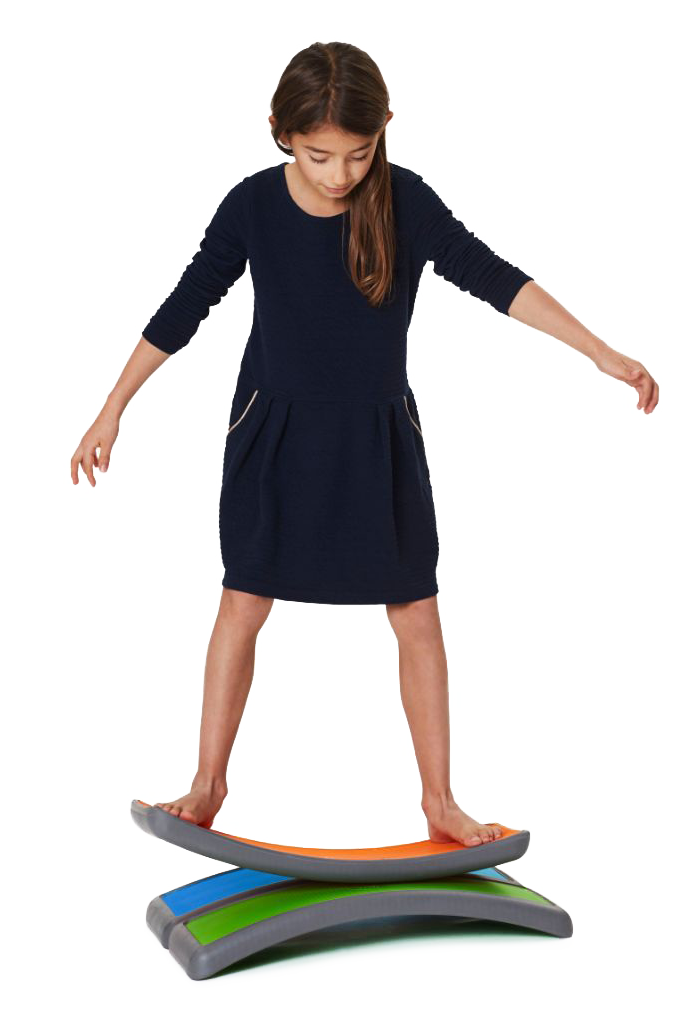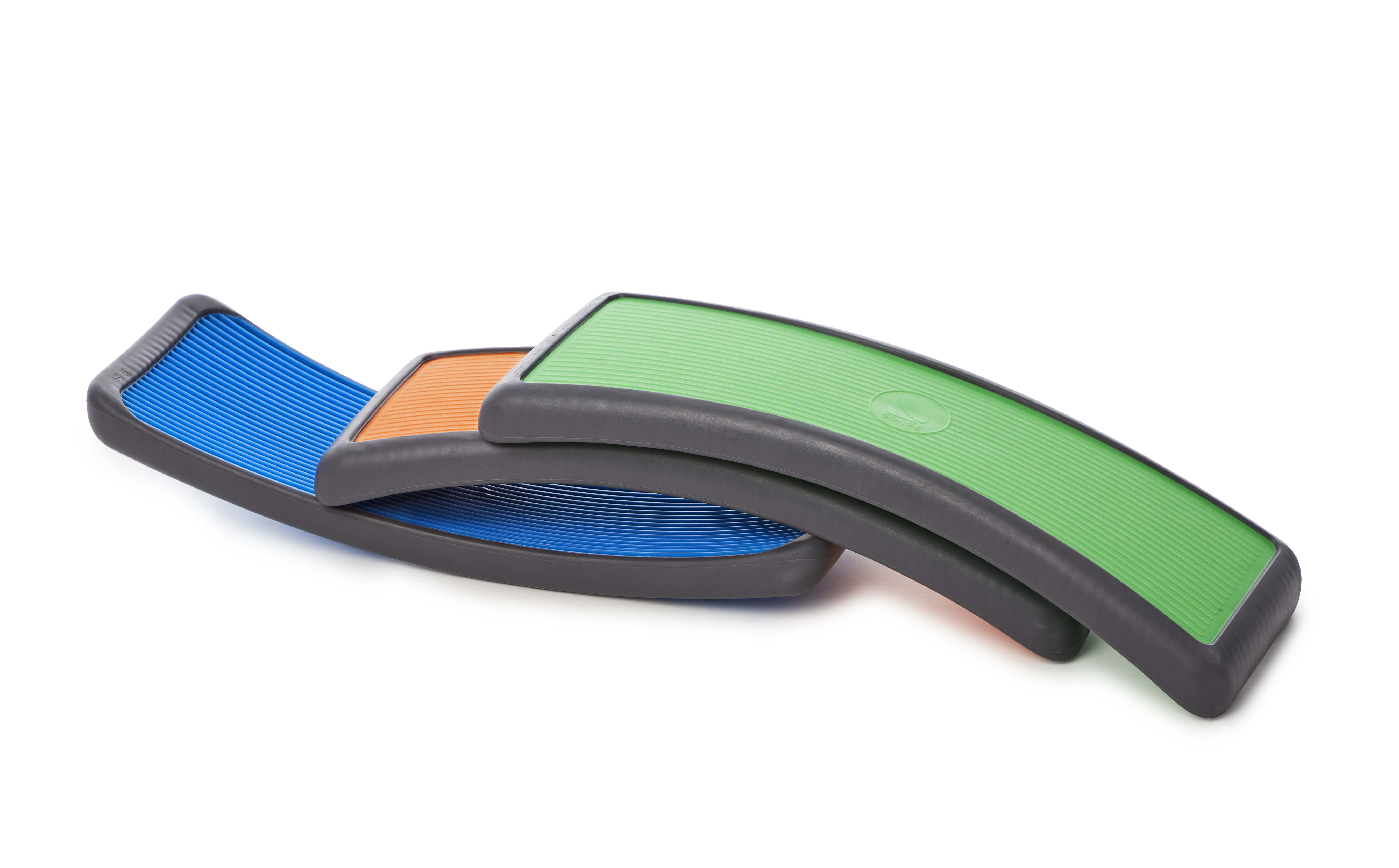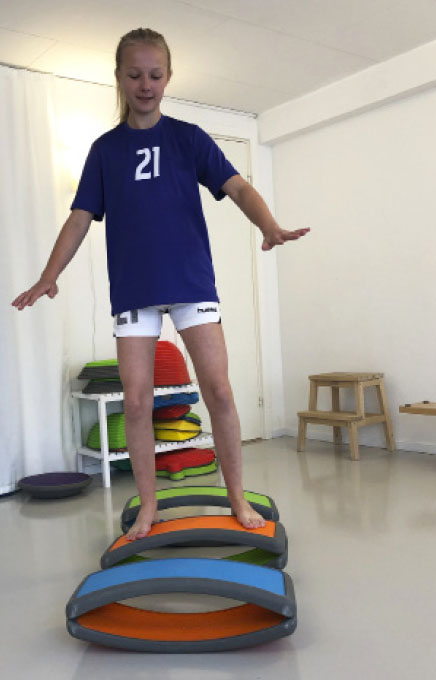CASE
Helena is an active young lady who plays elite handball. She has joined the national talent squad for young people.
During a training match, she is unfortunate to be pushed as she jumps up. She lands awkwardly and damages the cruciate ligament in her right knee.
Helena undergoes surgery to reconstruct the ligament. Six weeks after surgery, she begins an intensive rehabilitation programme.
She has been in rehabilitation for two months and has almost recovered. Helena begins to train with her handball team. While Helena is just as strong and agile as before her injury, she feels that she is still moving slower and is afraid of falling again.
I explain proactive and reactive balance control to Helena. I tell her that this is what we have to work with, so that she can regain her confidence and speed.
Using six Arches, we build three “eyes” in a row. I ask Helena to jump up onto one “eye” and stop it from rocking before jumping onto the next. To begin with, she jumps with her feet relatively close to each other. As she progresses, she jumps with a greater
distance between her feet, which makes the unpredictable rocking movement larger and the “eye” more difficult to balance on.
At first, Helena needs support before she dares jump up onto the “eye”. She quickly gains confidence enough to jump up unaided.
I give Helena six Arches so that she can train at home on a daily basis.
She returns after a week. Helena can now jump up and has no difficulty in finding her balance even with a foot at each end of the Arch. Now we begin to work with predictability and speed of movement. After each jump, I give Helena new instructions that she immediately has to convert into action: “Jump forward, feet together” or “Jump backwards, feet apart”. My instructions indicate in which direction Helena must jump and whether her feet should be close together or wide apart. Finally, Helena begins to devise challenges for herself. She begins to jump over, jump sideways down onto the floor and up again, etc. This is training proactive and reactive balance control at a high level. Helena finds that her knee is fully functional and that she very gradually becomes just as confident and can move just as fast as she did before.
After a further three weeks’ training, we sign her off. Helena returns to her handball team at the same level as before – and she is so pleased to be back.







